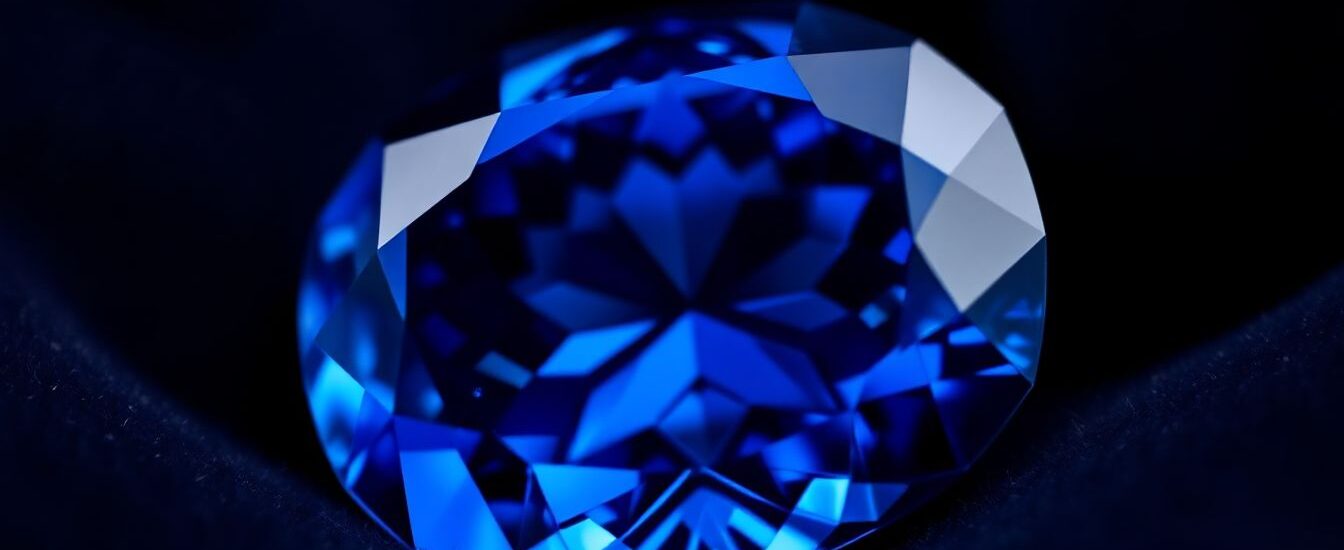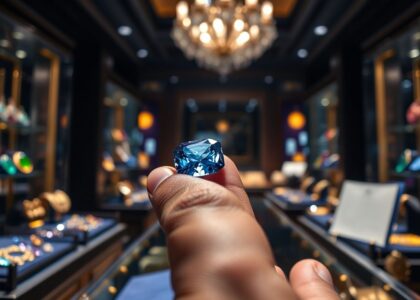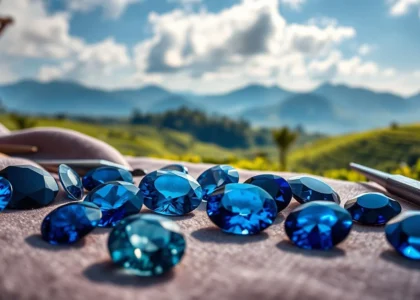Ceylon Blue Sapphire Buying Guide:
Everything You Need to Know to Make an Informed Purchase
Introduction
Ceylon Blue Sapphires are some of the most sought-after gems in the jewelry world. Their vivid color and rich history make them a symbol of elegance. Whether you’re buying for an investment or a special gift, knowing what to look for helps you avoid mistakes. An informed purchase guarantees you’ll get genuine, high-quality sapphires for your money. Understanding the key factors ensures you find a stone that’s beautiful and worth every penny.
Understanding Ceylon Blue Sapphires
What Makes Ceylon Blue Sapphires Unique?
Ceylon sapphires come from Sri Lanka, an island famous for producing some of the world’s best. These sapphires showcase a lively, deep royal blue. Unlike sapphires from other countries, they often display a softer, more velvety glow. Many celebrities have worn Ceylon sapphires, boosting their glam appeal. Their unique hue and clarity make them a top pick for jewelry collectors everywhere.
The Geological Formation of Ceylon Sapphires
This gemstone forms deep within Sri Lanka’s volcanic rocks. Over millions of years, mineral-rich solutions seep into rocks, creating sapphires. The exact color depends on the amount of trace elements like titanium and iron during formation. Location matters a lot — sapphires from specific regions tend to be more valuable. The natural geological process gives Ceylon sapphires their signature bright, vibrant blue.
Key Factors to Consider When Buying Ceylon Blue Sapphires
Color Characteristics
Look for a hue that strikes a balance between bright and dark blue. The perfect Ceylon sapphire usually has strong saturation without being too intense. Avoid stones that appear washed out or too pale. When examining, check how the color looks under different lights—natural daylight shows the true hue best. Deep, vivid blue gems tend to be more valuable than lighter shades.
Clarity and Inclusions
Most natural sapphires have some internal features called inclusions. These can include tiny feathers, crystals, or rutile needles. While inclusions are normal, they should not distract from the main beauty. A stone with fewer inclusions is clearer and more valuable. But, some inclusions add character—just know which ones are natural and which are caused by treatments. Choose clarity based on your budget and desired look.
Cut and Shape
Ceylon sapphires come in many shapes—round, oval, cushion, or fancy cuts. The cut determines how much light reflects inside the stone, affecting its sparkle. A well-cut sapphire shows symmetry and good proportions. Check for smooth edges, precise facets, and balanced symmetry. A good cut makes a difference in how vibrant your sapphire appears and how much it catches the eye.
Carat Size and Pricing
Larger sapphires command higher prices. But bigger doesn’t always mean better if the quality isn’t right. You should consider size alongside color, clarity, and cut. Sometimes, a smaller, high-quality stone looks better than a big, dull one. Strike a balance where size complements overall quality for the best value.
Treatments and Enhancements
Many sapphires undergo treatments to improve color or clarity. The most common is heat treatment, which is widely accepted. But some sapphires are also diffusion-treated or coated, which can alter their natural look. Always ask for disclosure when buying. Untreated stones tend to be more valuable. Be cautious—treatments can affect durability and long-term value.
Certifications and Documentation
Always buy a sapphire accompanied by a certification from a reputable lab like GIA or GRS. The report confirms the gemstone’s origin, treatment history, and quality grades. This helps you avoid fake or heavily treated stones. Look for details like measurements, color description, and clarity grades. A certified sapphire provides peace of mind and protects your investment.
Selecting the Right Source and Seller
Reputable Jewelers and Certified Dealers
Choose sellers with a solid reputation. Look for transparency about the gemstone’s origin and treatments. Reputable stores offer clear return policies and after-sales service. Expertise matters—specialty jewelers know what to look for in Ceylon sapphires. Don’t settle for pushy salespeople—trust those who educate you about your purchase.
Bismuth Gems and Jewellery we always educate people before even they are considering to buy or no, because a gemstone is a jewellery also an investment.
Online vs. In-Person Purchases
Buying online can be convenient and often offers better prices. But it requires careful evaluation of images and descriptions. Request detailed photos and certification info. Seeing stones in person allows you to judge color and sparkle firsthand. If you buy online, select sellers with good reviews and clear policies. In-person shopping allows you to compare multiple options and get expert advice on-site.
Price Ranges and Budgeting
Authentic Ceylon sapphires can range from a few hundred dollars per carat for lower-quality stones to several thousand for high-grade gems. Set a realistic budget based on your goals. Remember, high color saturation and clarity often mean higher prices. Don’t sacrifice quality for size—look for the best gem within your price. Once you know what to focus on, you’ll get the best bang for your buck.
Caring for Your Ceylon Blue Sapphire
Maintenance and Cleaning Tips
Clean your sapphire gently with warm soapy water and a soft brush. Avoid harsh chemicals or ultrasonic cleaners if your stone has treatments. Protect it from scratches by storing it separately or in a soft pouch. Regular checks for loose settings will keep your jewelry safe and looking beautiful for years.
Insurance and Appraisal
Insure your valuable sapphire to protect against theft or damage. Obtain a professional appraisal periodically, especially if the stone increases in value or your collection grows. Proper documentation and insurance give you peace of mind and an added layer of security for your investment.
Conclusion
Choosing a Ceylon Blue Sapphire involves more than just picking a pretty stone. Understand its unique features, evaluate quality factors, and buy from trusted sources. Certifications and expert advice make a big difference in authenticity and value. Remember, patience and education help you find a sapphire that’s both stunning and a smart investment. When you prioritize quality and transparency, your perfect Ceylon sapphire will shine beautifully for years to come.






